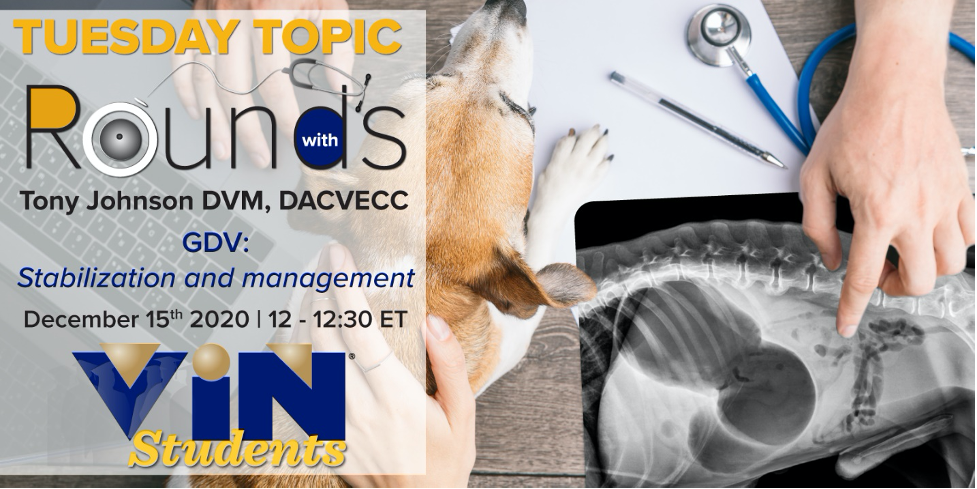VIN Topic Rounds
 Monday, December 14, 2020 at 01:00PM
Monday, December 14, 2020 at 01:00PM 
Are you missing out on clinical rotations because of COVID-19? The VIN Student Team has you covered with Tuesday Topic Rounds. During the month of December, join Dr. Tony Johnson, DVM, DACVECCS for 30 minute, case-based sessions on Emergency Medicine every Tuesday at 12ET. Everyone and all levels of experience are welcome. There will be time for Q&A and discussion following. The next session is GDV Management and Stabilization on December 15, 2020 at 12 ET.
In this rounds:
- Surgical tips
- Radiographic diagnosis
- How to perform trocarisation and pre-op stabilization
NEW!!! NOW TO JOIN THE SESSION JUST LOG INTO THE VIN STUDENT CENTER AND CLICK THE GREEN BUTTON IN THE TOP RIGHT
The Veterinary Information Network (VIN) is here to help you as a vet student – especially during this worldwide pandemic. Membership is always free as a student!
 VIN,
VIN,  emergency and critical care,
emergency and critical care,  rounds in
rounds in  News,
News,  VIN Topic Rounds
VIN Topic Rounds 



